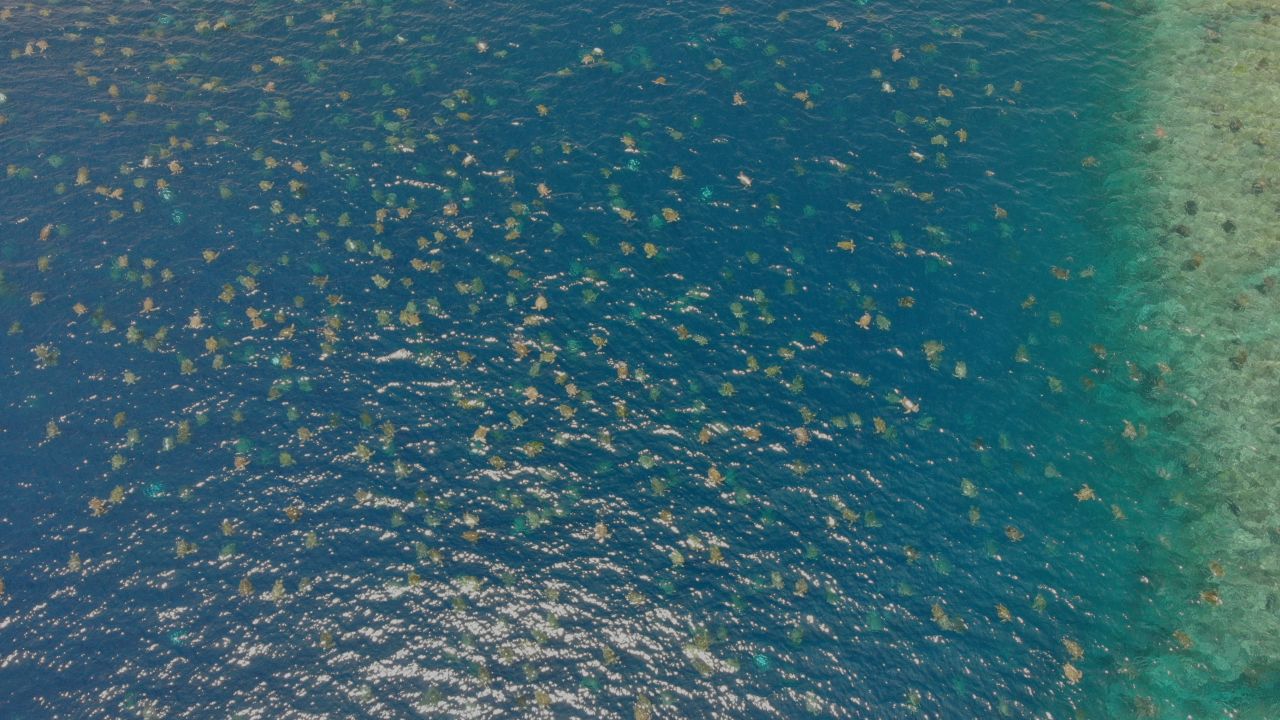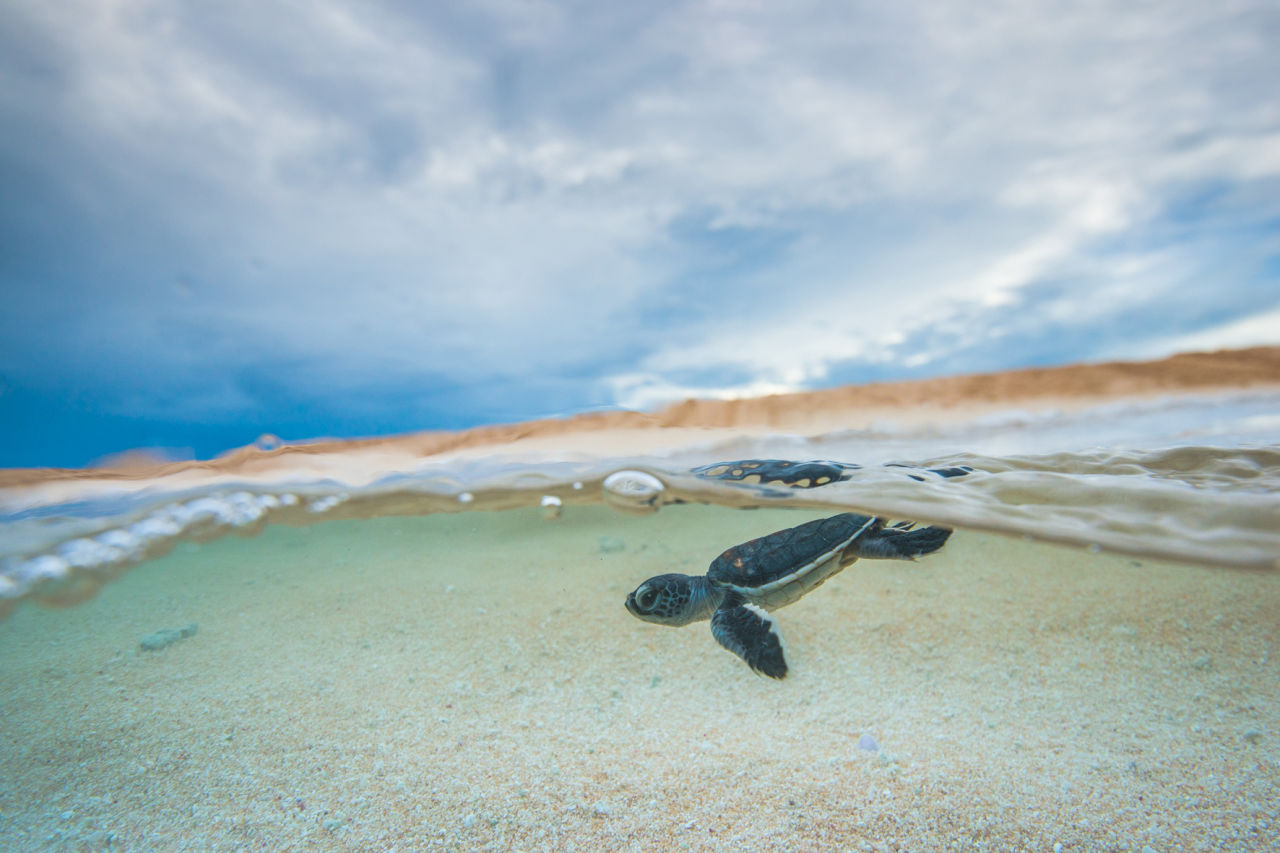News ·
Counting turtles is a science
So how do you count more than 64,000 turtles at once?

With drones – and now we have the science to prove it.
Our Raine Island Recovery Project researchers are investigating the best way to count all the turtles at the world’s largest green turtle nesting area. The highly respected PLOS ONE journal has just published their findings (see the paper).
Great Barrier Reef Foundation Managing Director Anna Marsden congratulated the researchers on their outstanding work and results.
“We’re seeing the world’s largest aggregation of green turtles captured in these extraordinary drone images that are helping to document the largest turtle numbers seen since we began the Raine Island Recovery Project,” Ms Marsden said.
“This important research combines science and technology to more effectively count endangered green turtles.
“Raine Island is the world’s largest green turtle nesting site and that’s why we’re working with our Raine Island Recovery Project partners to protect and restore the island’s critical habitat.
“We’re taking action to improve and rebuild the island’s nesting beaches and building fences to prevent turtle deaths, all working to strengthen the island’s resilience and ensure the survival of our northern green turtles and many other species.”
The research paper’s lead author Dr Andrew Dunstan from the Queensland Department of Environment and Science is excited to share his work.
“Trying to accurately count thousands of painted and unpainted turtles from a small boat in rough weather was difficult,” Dr Dunstan said.
“Using a drone is easier, safer, much more accurate, and the data can be immediately and permanently stored.”
Co-author Richard Fitzpatrick from the Biopixel Oceans Foundation said, “What previously took a number of researchers a long time can now be done by one drone operator in under an hour.”
The research found drones, or Unmanned Aerial Vehicles (UAVs), were the most efficient survey method, with underwater video like using a Go-Pro a useful alternative for in-water surveys.
BHP Mitsubishi Alliance (BMA) Asset President James Palmer said, “The Raine Island Recovery Project is a great example of business, governments, Traditional Owners and not-for-profits working together to protect the Great Barrier Reef, in this case the remarkable ecosystem of Raine Island. It’s great to see innovative technology like drones used in this way for turtle conservation.”
Dr Dunstan said the Raine Island Recovery Project is making a major contribution to the future sustainability of the world’s most important green turtle rookery.
“This research is of prime importance to the understanding and management of the vulnerable green turtle population,” he said.
“In the future, we will be able to automate these counts from video footage using artificial intelligence so the computer does the counting for us.”
The Foundation’s five-year, $7.95 million Raine Island Recovery Project is a partnership with BHP, the Queensland Government, the Great Barrier Reef Marine Park Authority, and the Wuthathi and Meriam Nation (Ugar, Mer, Erub) Traditional Owners the Great Barrier Reef Foundation.

Raine Island Recovery Project
Restoring the world’s largest green turtle nesting area on Raine Island.




